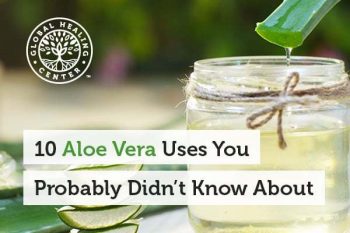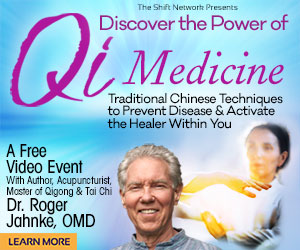Guest writer for Wake Up World
Aloe vera, also known as Aloe barbadensis, has been a staple resource in many cultures around the world for thousands of years. While the plant originated in southern Africa, you can find it growing around the world in places as varied as the Mediterranean and the southern United States.[1] Traditional uses for aloe vera include soothing burns, moisturizing skin, and helping small wounds heal.
There are a lot of nutrients and potential health benefits packed into this easy-to-maintain plant — over 200 different biologically active substances.[1] Because of its impressive profile, it is used in lotions, ointments, creams, sunburn remedies, and many other types of cosmetics. Many people even apply it to acne, and that’s just the tip of the iceberg. Let’s take a look at some uses you may not know about.
Aloe Vera Benefits and Uses
1. Aloe Vera Supports the Immune System
Your immune system requires oxygen-rich blood. Aloe vera supports nutrient absorption from the gut; this includes iron absorption. Iron carries free oxygen molecules from your lungs around the body, and proper iron absorption is a key factor in maintaining blood-oxygen levels.[2] One of the ways aloe helps you absorb nutrients is by keeping the digestive tract clear of debris through bowel regularity. This allows the food you’ve eaten to better come into contact with the intestinal lining, increasing nutrient exposure and absorption.[3]
Aloe also acts as an adaptogen, which helps keep your cells and tissues in balance. It makes the immune system’s job easier by protecting cells from oxidative stress and other factors that disrupt their function.[4]
Aloe vera is a rich source of polysaccharides. Research shows these complex sugars improve the efficiency of the immune system.[5] Aloe is also rich in the antioxidants that protect cells from free radical damage.[6]
2. Aloe Vera Supports Normal Digestion
Aloe vera contains two enzymes — amylase and lipase — that help encourage normal digestion. The plant also helps keep your stomach acid levels balanced to support a normal gut environment.[6, 7]
Aloe contains acemannan. Acemannan and other polysaccharides are prebiotics that support probiotics in the gut.[8] When you have these ‘good guys’ in your gut, you’re apt to digest your food better, get more nutritional value from it, and enjoy better overall health. A University of California, Davis study found that people who consumed aloe vera were able to more efficiently absorb vitamins C and B-12.[9]
3. Eases Digestive Discomfort
Common digestive concerns like gas, diarrhea, constipation, and abdominal pain affect a lot of people. If you’re looking for a natural solution to ease your digestive discomfort, then aloe vera may be able to help. Studies show decreased gas, bloating, and discomfort in those who take regular aloe supplements.[10, 11]
Some preliminary research suggests aloe may also help with certain types of intestinal ulcer. In a clinical trial, 30 patients suffering from the condition were given aloe vera by mouth. Fourteen of the thirty patients reported some form of improvement; only four patients in the placebo group reported improvement.[7, 12]
4. Rich in Vitamins and Minerals
- Vitamin A (beta-carotene): Important for healthy skin, teeth, bones, and eyes.
- Vitamin C: Vital for metabolism, skin health, and immune function.
- Vitamin E: Protects the skin from UV damage.
- Vitamin B12: Keeps nerve and brain cells healthy. Necessary for DNA replication.
- Folic acid: Essential for brain function, liver health, and metabolism.
- Choline: Supports metabolism and the production of neurotransmitters responsible for memory, focus, and a positive mood.
- Calcium
- Chromium
- Copper
- Selenium
- Magnesium
- Manganese
- Potassium
- Sodium
- Zinc [6]
5. Aloe Vera Is a Great Source of Nutrients and Enzymes
Aloe vera is often called a superfood because, in addition to vitamins and minerals, it offers more than 200 other bioavailable nutrients. It’s especially rich in the following enzymes, which support metabolism, hormone function, digestion, and detoxification:
- Alliinase
- Alkaline phosphatase
- Amylase
- Bradykinase
- Carboxypeptidase
- Catalase
- Cellulase
- Lipase
- Peroxidase[6]
There is a group of nutrients known as secondary metabolites which are found in aloe and other plants. Some of these include aloe emodin, chrysophanol, aloesin, and aloin. Research shows these nutrients can offer a number of other significant health benefits which include antioxidant support.[1]
6. Aloe Supports Cardiovascular Health
Aloe vera is a rich source of beneficial plant compounds called phytosterols. Phytosterols promote normal lipid levels and support cardiovascular health.[13] In a five-year study of 5,000 heart disease patients, researchers found those who consumed aloe vera and another plant called Husk of Isabgol had better lipid and blood sugar levels.[14, 15]
7. Aloe Vera Boosts Dental Health
A recent study involving 345 participants suggests aloe makes an effective mouthwash that supports healthy teeth and gums.[16] Other research indicates that aloe vera gel can help resist Candida albicans, a common oral yeast.[17]
8. Aloe Resists Harmful Organisms
Some plants contain a variety of chemicals and compounds that help suppress harmful organisms. Aloe vera itself contains six separate antiseptic agents: lupeol, salicylic acid, urea nitrogen, cinnamic acid, phenols, and sulfur.[5]
9. Aloe Vera Is Ultra Soothing
Aloe vera is ultra-soothing for cuts, sun burns, and scrapes. Whether it is a topical gel, lotion, or just breaking open a fresh leaf and rubbing it onto a problem area, aloe helps calm red, swollen, and irritated skin. One reason for its soothing properties is an enzyme called bradykinase that helps soothe agitated tissue.[18]
10. Aloe Vera May Have Anti-Aging Properties
Aloe vera does more than soothe and moisturize. It also offers anti-aging benefits that smooth the appearance of wrinkles from the inside out. In one study, 30 women over the age of 45 took an aloe vera gel supplement for 90 days. By the end of the study, the appearance of facial wrinkles softened, and their skin looked healthier.[19]
History of Aloe Vera
While the benefits of aloe are impressive, they’re not entirely new to us. We are only rediscovering what our ancestors already knew. Egyptians prized the plant over 6,000 years ago.[20] One of the first mentions of aloe vera appears in the Papyrus Ebers around B.C. 1550, which shows 12 formulas for using aloe vera therapeutically. It proved so useful that it was known as the “Plant of Immortality.” People would even present aloe vera as a burial gift to deceased pharaohs. It is widely believed that Egyptian queens Nefertiti and Cleopatra used aloe vera cosmetically. [20, 6]
Egypt was not the only part of the world that found value in the aloe vera plant. As early as 600 BC, there’s record of Arab traders bringing aloe vera to India — which they called “desert lily.” Arabs were already separating the inner gel and sap from the outer rind, even grinding the leaves into powder. This aloe powder was highly valued. In fact, records from as early as the 17th century show the East India Trading Company relied heavily on aloe for its commercial value.
With such amazing historical uses, aloe vera has earned nicknames from all around the globe – names like the “silent healer”, “sabila” “burn plant”, “ghai kunwar”, “elephant’s gall”, “isha irazu”, “cape aloe”, the “medicine plant”, and the “first aid plant”. And, while there are many other aloe species, none are so heavily utilized as aloe vera.
Today, aloe vera gel is a common additive in beauty products and used for a wide arrange burns, cuts, and other skin concerns. Many people drink aloe vera juice for its nutritional value.[21] You can even find edible gels from the inner leaf of the plant in many grocery stores, and it has gained popularity as a smoothie ingredient.
Choosing the Right Aloe Vera
As more and more aloe products arrive on the market — gels, lotions, creams, juices, and capsules — it’s easier than ever to access the benefits of the plant. When choosing a supplement, always check the ingredients. Some products include fillers and may not contain the nutrients, ingredients, or concentrations you expect.
For a supplement with the full nutritional force of aloe, I recommend Aloe Fuzion. It’s a highly bioavailable aloe vera supplement made from organic inner leaf aloe vera gel. It contains the most acemannan content of any aloe product available and the feedback has been outstanding.
Is aloe vera a favorite of yours? How do you use it? Leave a comment below and share your thoughts with us.
References:
- Radha, Maharjan H., and Nampoothiri P. Laxmipriya. “Evaluation of Biological Properties and Clinical Effectiveness of Aloe Vera: A Systematic Review.” Journal of Traditional and Complementary Medicine 5.1 (2015): 21–26. PMC. Web. 22 Mar. 2017.
- Benzie, Iris F. F., and Sissi Wachtel-Galor. “Herbal Medicine: Biomolecular and Clinical Aspects.” Boca Raton: CRC, 2011. Print.
- Barcroft, Alasdair, and Audun Myskja. “Aloe Vera: Nature’s Silent Healer.” London: BAAM, 2003. Print.
- Rahmani, Arshad H., et al. “Aloe Vera: Potential Candidate in Health Management via Modulation of Biological Activities.” Pharmacognosy Reviews 9.18 (2015): 120–126. PMC. Web. 22 Mar. 2017.
- Tong H, Tian D, Li T, Wang B, Jiang G, Sun X. “Inhibition of inflammatory injure by polysaccharides from Bupleurum chinense through antagonizing P-selectin.” Carbohydr Polym. 2014 May 25. Web. 22 Mar. 2017.
- Surjushe, Amar, Resham Vasani, and D G Saple. “ALOE VERA: A SHORT REVIEW.” Indian Journal of Dermatology 53.4 (2008): 163–166. PMC. Web. 22 Mar. 2017.
- Keshavarzi, Zakieh, et al. “The Effects of Aqueous Extract of Aloe Vera Leaves on the Gastric Acid Secretion and Brain and Intestinal Water Content Following Acetic Acid- Induced Gastric Ulcer in Male Rats.” Avicenna Journal of Phytomedicine 4.2 (2014): 137–143. Print.
- Gullón B, Gullón P, Tavaria F, Alonso JL, Pintado M. “In vitro assessment of the prebiotic potential of Aloe vera mucilage and its impact on the human microbiota.” Food Funct. 2015 Feb;6(2):525-31. Web. 22 Mar. 2017.
- Yun JM, Singh S, Jialal R, Rockwood J, Jialal I, Devaraj S. “A randomized placebo-controlled crossover trial of aloe vera on bioavailability of vitamins C and B(12), blood glucose, and lipid profile in healthy human subjects.” J Diet Suppl. 2010 Jun;7(2):145-53. Web. 22 Mar. 2017.
- Khedmat, Hossein et al. “Aloe Vera in Treatment of Refractory Irritable Bowel Syndrome: Trial on Iranian Patients.” Journal of Research in Medical Sciences?: The Official Journal of Isfahan University of Medical Sciences 18.8 (2013): 732. Print.
- Størsrud S, Pontén I, Simrén M. “A Pilot Study of the Effect of Aloe barbadensis Mill. Extract (AVH200®) in Patients with Irritable Bowel Syndrome: a Randomized, Double-Blind, Placebo-Controlled Study.” J Gastrointestin Liver Dis. 2015 Sep;24(3):275-80. Web. 22 Mar. 2017.
- Langmead L, Feakins RM, Goldthorpe S, Holt H, Tsironi E, De Silva A, Jewell DP, Rampton DS. “Randomized, double-blind, placebo-controlled trial of oral aloe vera gel for active ulcerative colitis.” Aliment Pharmacol Ther. 2004 Apr 1;19(7):739-47. Web. 22 Mar. 2017.
- Ostlund RE Jr. “Phytosterols and cholesterol metabolism.” Curr Opin Lipidol. 2004 Feb;15(1):37-41. Web. 22 Mar. 2017.
- Agarwal OP. “Prevention of atheromatous heart disease.” Angiology. 1985 Aug;36(8):485-92. Web. 22 Mar. 2017.
- Tanaka M, Misawa E, Ito Y, Habara N, Nomaguchi K, Yamada M, Toida T, Hayasawa H, Takase M, Inagaki M, Higuchi R. “Identification of five phytosterols from Aloe vera gel as anti-diabetic compounds.” Biol Pharm Bull. 2006 Jul;29(7):1418-22. Web. 22 Mar. 2017.
- Karim B, Bhaskar DJ, Agali C, Gupta D, Gupta RK, Jain A, Kanwar A. “Effect of Aloe vera mouthwash on periodontal health: triple blind randomized control trial.” Oral Health Dent Manag. 2014 Mar;13(1):14-9. Web. 22 Mar. 2017.
- Sujatha, G et al. “Aloe Vera in Dentistry.” Journal of Clinical and Diagnostic Research?: JCDR 8.10 (2014): ZI01–ZI02. PMC. Web. 22 Mar. 2017.
- Bautista-Pérez, R., D. Segura-Cobos, and B. Vázquez-Cruz. “In Vitro Antibradykinin Activity of Aloe Barbadensis Gel.” Journal of Ethnopharmacology 93.1 (2004): 89-92. Web. 22 Mar. 2017.
- Nejatzadeh-Barandozi, Fatemeh. “Antibacterial Activities and Antioxidant Capacity of Aloe Vera.” Organic and Medicinal Chemistry Letters 3 (2013): 5. PMC. Web. 22 Mar. 2017.
- “Aloe Vera.” National Institutes of Health. U.S. Department of Health and Human Services, 29 Sept. 2016. Web. 22 Mar. 2017.
- Foster M, Hunter D, Samman S. “Evaluation of the Nutritional and Metabolic Effects of Aloe vera.” In: Benzie IFF, Wachtel-Galor S, editors. Herbal Medicine: Biomolecular and Clinical Aspects. 2nd edition. Boca Raton (FL): CRC Press/Taylor & Francis; 2011. Chapter 3.
Recommended articles by Dr. Edward Group:
- Study Finds Antidepressants to be Depressingly Ineffective
- The 9 Best Fermented Foods for Your Gut
- 14 Foods that Cleanse the Liver
- Top 5 Foods for the Pineal Gland
- The Importance of a Kidney Cleansing Diet
- The 9 Best Herbs for Lung Cleansing and Respiratory Support
- 7 Best Foods to Support Kidney Function
- How Fluoride Damages Pineal Gland Health
- 10 Uses for Organic Oregano Oil
- Lung Cleanse: 10 Ways to Detox Your Lungs
About the author:
Dr. Edward F. Group III (DC, ND, DACBN, DCBCN, DABFM) founded Global Healing Center in 1998 with the goal of providing the highest quality natural health information and products. He is world-renowned for his research on the root cause of disease. Under his leadership, Global Healing Center earned recognition as one of the largest natural and organic health resources in the world. Dr. Group is a veteran of the United States Army and has attended both Harvard and MIT business schools. He is a best-selling author and a frequent guest on radio and television programs, documentary films, and in major publications.
Dr. Group centers his philosophy around the understanding that the root cause of disease stems from the accumulation of toxins in the body and is exacerbated by daily exposure to a toxic living environment. He believes it is his personal mission to teach and promote philosophies that produce good health, a clean environment, and positive thinking. This, he believes, can restore happiness and love to the world.
For more, please visit Global Healing Center.

If you've ever found value in our articles, we'd greatly appreciate your support by purchasing Mindful Meditation Techniques for Kids - A Practical Guide for Adults to Empower Kids with the Gift of Inner Peace and Resilience for Life.
In the spirit of mindfulness, we encourage you to choose the paperback version. Delve into its pages away from screen glare and notifications, allowing yourself to fully immerse in the transformative practices within. The physical book enriches the learning process and serves as a tangible commitment to mindfulness, easily shared among family and friends.
Over the past few years, Wake Up World has faced significant online censorship, impacting our financial ability to stay online. Instead of soliciting donations, we're exploring win-win solutions with our readers to remain financially viable. Moving into book publishing, we hope to secure ongoing funds to continue our mission. With over 8,500 articles published in the past 13 years, we are committed to keeping our content free and accessible to everyone, without resorting to a paywall.









